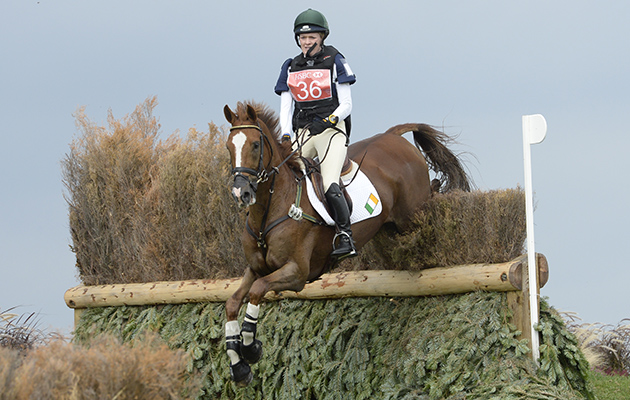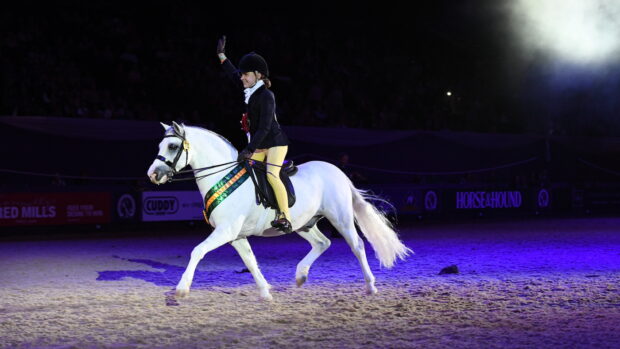Simon (pictured) is a leading show rider who has won numerous championships at top level. He won the supreme title at Horse of the Year Show (HOYS) with Hallmark IX in 2013 and has won supreme twice at Great Yorkshire. He also won HOYS four times with small hunter Sporting Sam.
Training the stars
Hallmark IX had a tendency to rush in his early days. He had a lot of power and sometimes struggled to contain it. Blowouts on the gallops and swimming helped burn his excess exuberance. I had to work to teach him to control it and be obedient, but the beauty was knowing I had that explosive gallop in a main ring, which was his trademark.
Rushing horses are a common sight in the show ring, especially on the go-round. Quite often this is due to horses getting competitive with the others, but I also see a lot of rider tension and riders holding too much rein.
The most common reason for horses to rush, especially in canter, is because they’re poorly prepared. They’re either too fresh, incorrectly ridden or not used to being in large groups.
Tackling the issue
1. When schooling, only ask for your horse to canter when the walk and trot are soft and supple, and he is responding well to your aids.
2. Pick up canter and ride a large circle. Half-halt to ask your horse to come back slowly and collect slightly — avoid constantly pulling on the reins and holding the horse with a tight contact.
Ride slightly smaller, decreasing circles to gain the control and then slowly increase the circle as the canter becomes more balanced and the horse more responsive to your aids.
3. Then, work on going large around the arena. On the long side, give with your hand to release the rein slowly and then take back the contact.
You want to avoid your horse being reliant on your hand to stay in the correct rhythm.
4. Try using cones on the circle to help the horse focus and enable the
correct bend.
Essentially, the aim is for your horse to be in self-carriage, using his hindquarters and becoming light in front.
Article continues below…
You might also be interested in:

Using cavaletti to improve the horse’s canter and balance

#SundaySchool: How can I achieve a soft contact?
Dressage rider Jessica Dunn explains how to achieve harmony in the hand and stop a horse resisting the bridle

Subscribe to Horse & Hound magazine today – and enjoy unlimited website access all year round
Consider this…
- A variety of work will help a horse’s mental wellbeing. I’m a big believer of “field therapy” — horses need their own space to run and feel no pressure, so often I will turn out a sharp horse overnight.
- Over-schooling a horse in a manège environment can be detrimental. It’s good to give a sharp horse a blowout in a field or on the gallops to get the silliness out of him before schooling. You’re not going to get that instant, calm responsiveness from drilling in the arena. If you only have an arena, send him on for a few laps before asking him to collect.
- Know the difference between an unbalanced horse and an anxious one. Unbalanced horses often lack the strength to do what is asked. You will achieve balance only through correct training.
- Ask a trainer to assess your riding. An unbalanced rider relying on their hands can cause a horse to be erratic and evasive.
- Check your horse’s back, saddle, teeth, general health and diet.
- Overbitting a horse is quite often a quick fix and can lead to tension, creating a short neck and stride.
Would you like to read Horse & Hound’s independent journalism without any adverts? Join Horse & Hound Plus today and you can read all articles on HorseandHound.co.uk completely ad-free.




